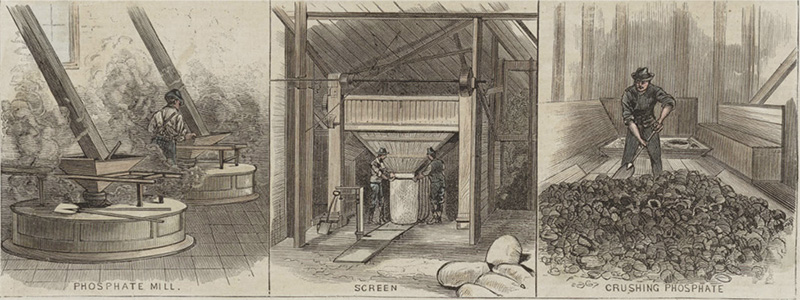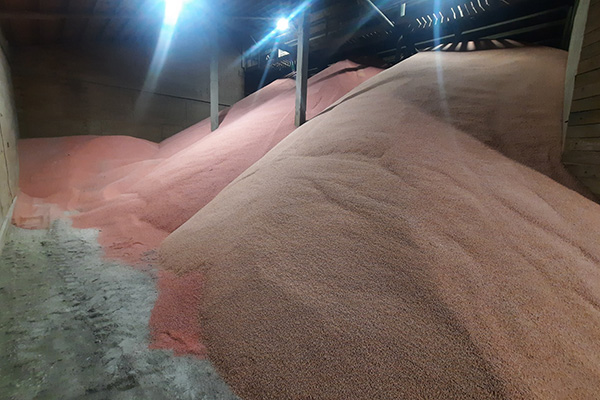Overview
Fertilizer was applied to fields to improve yield. The first phosphate mined in the US was in Charleston, SC in the late 1800s. Acidic soils in SC became a serious problem for crop production as well. Fertilizer and lime were needed to improve crop yield. A tax on fertilizer was instituted.
Phosphates in South Carolina, 1870-1890; digital.library.sc.edu



